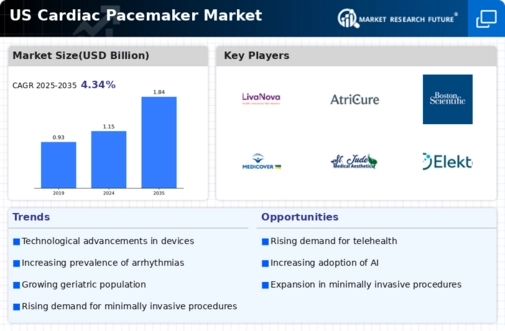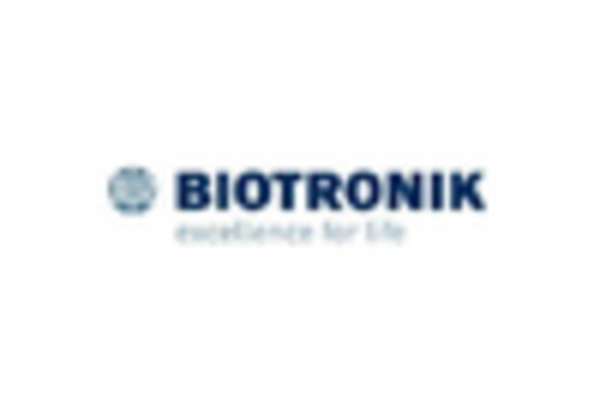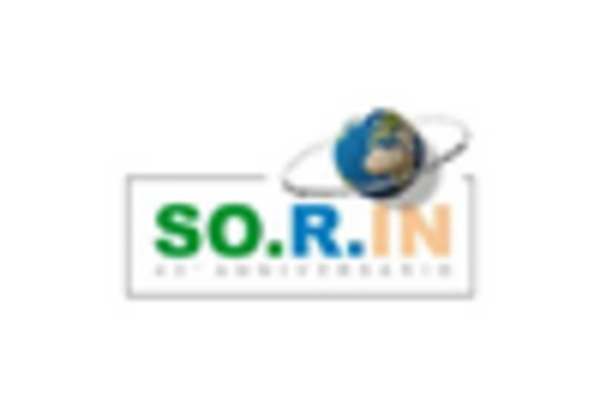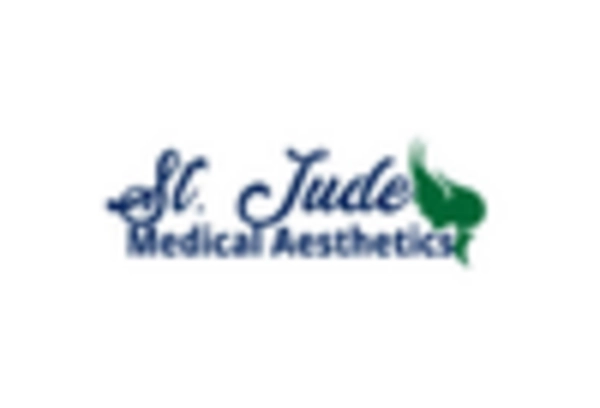Rising Aging Population
Growth in the cardiac pacemaker market is due to the increasing aging population in the United States. As individuals age, the prevalence of heart-related conditions rises, necessitating the use of cardiac pacemakers. According to the U.S. Census Bureau, by 2030, all baby boomers will be over 65 years old, leading to a significant rise in demand for cardiac devices. This demographic shift indicates a potential increase in the number of patients requiring pacemakers, thereby driving market expansion. Furthermore, older adults often have comorbidities that complicate their cardiovascular health, further emphasizing the need for effective cardiac management solutions. Healthcare providers are likely to address the unique needs of this aging population, benefiting the cardiac pacemaker market.
Rising Healthcare Expenditure
Rising healthcare expenditure in the United States is benefiting the cardiac pacemaker market. Increased spending on healthcare services allows for better access to advanced medical technologies, including cardiac devices. According to the Centers for Medicare & Medicaid Services, national health expenditure is projected to grow at an average rate of 5.4% annually, reaching approximately $6.2 trillion by 2028. This financial commitment to healthcare is likely to facilitate the adoption of cardiac pacemakers, as hospitals and clinics invest in state-of-the-art equipment to improve patient outcomes. Consequently, the cardiac pacemaker market is expected to thrive in an environment of increased healthcare investment.
Increased Awareness and Education
There is a growing awareness regarding cardiovascular health and the role of cardiac pacemakers in managing heart conditions. Educational initiatives by healthcare organizations and advocacy groups are informing the public about the symptoms of arrhythmias and the benefits of pacemaker implantation. This heightened awareness is likely to lead to earlier diagnosis and treatment, thereby increasing the demand for cardiac pacemakers. Furthermore, as patients become more informed about their treatment options, they may actively seek out pacemaker solutions, contributing to market growth. The cardiac pacemaker market is thus positioned to expand as awareness campaigns continue to reach broader audiences.
Technological Innovations in Device Design
Innovations in the design and functionality of cardiac pacemakers are propelling the cardiac pacemaker market forward. Recent advancements include the development of leadless pacemakers, which offer a less invasive option for patients. These devices reduce the risk of complications associated with traditional pacemakers, such as lead-related infections. The market is projected to grow as these innovative devices gain acceptance among healthcare professionals and patients alike. Additionally, the integration of remote monitoring technologies allows for better patient management and follow-up, enhancing the overall effectiveness of cardiac care. As these technologies continue to evolve, they are expected to play a crucial role in shaping the future of the cardiac pacemaker market.
Growing Incidence of Heart Rhythm Disorders
The rising incidence of heart rhythm disorders is a critical driver for the cardiac pacemaker market. Conditions such as atrial fibrillation and bradycardia are becoming more prevalent, particularly among older adults. The American Heart Association reports that millions of Americans are affected by these disorders, leading to a heightened need for effective management solutions. As healthcare providers seek to address these conditions, the demand for cardiac pacemakers is likely to increase. This trend suggests that the cardiac pacemaker market will continue to expand as more patients are diagnosed and treated for heart rhythm abnormalities.

















Leave a Comment